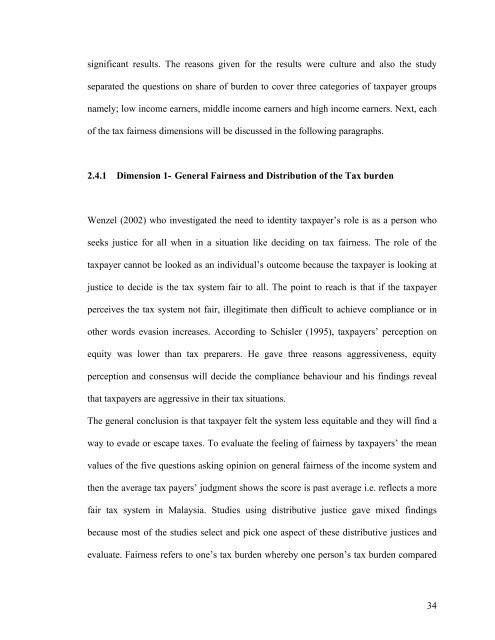1 CHAPTER 1: INTRODUCTION 1.0 Chapter ... - DSpace@UM
1 CHAPTER 1: INTRODUCTION 1.0 Chapter ... - DSpace@UM
1 CHAPTER 1: INTRODUCTION 1.0 Chapter ... - DSpace@UM
Create successful ePaper yourself
Turn your PDF publications into a flip-book with our unique Google optimized e-Paper software.
significant results. The reasons given for the results were culture and also the studyseparated the questions on share of burden to cover three categories of taxpayer groupsnamely; low income earners, middle income earners and high income earners. Next, eachof the tax fairness dimensions will be discussed in the following paragraphs.2.4.1 Dimension 1- General Fairness and Distribution of the Tax burdenWenzel (2002) who investigated the need to identity taxpayer’s role is as a person whoseeks justice for all when in a situation like deciding on tax fairness. The role of thetaxpayer cannot be looked as an individual’s outcome because the taxpayer is looking atjustice to decide is the tax system fair to all. The point to reach is that if the taxpayerperceives the tax system not fair, illegitimate then difficult to achieve compliance or inother words evasion increases. According to Schisler (1995), taxpayers’ perception onequity was lower than tax preparers. He gave three reasons aggressiveness, equityperception and consensus will decide the compliance behaviour and his findings revealthat taxpayers are aggressive in their tax situations.The general conclusion is that taxpayer felt the system less equitable and they will find away to evade or escape taxes. To evaluate the feeling of fairness by taxpayers’ the meanvalues of the five questions asking opinion on general fairness of the income system andthen the average tax payers’ judgment shows the score is past average i.e. reflects a morefair tax system in Malaysia. Studies using distributive justice gave mixed findingsbecause most of the studies select and pick one aspect of these distributive justices andevaluate. Fairness refers to one’s tax burden whereby one person’s tax burden compared34
















